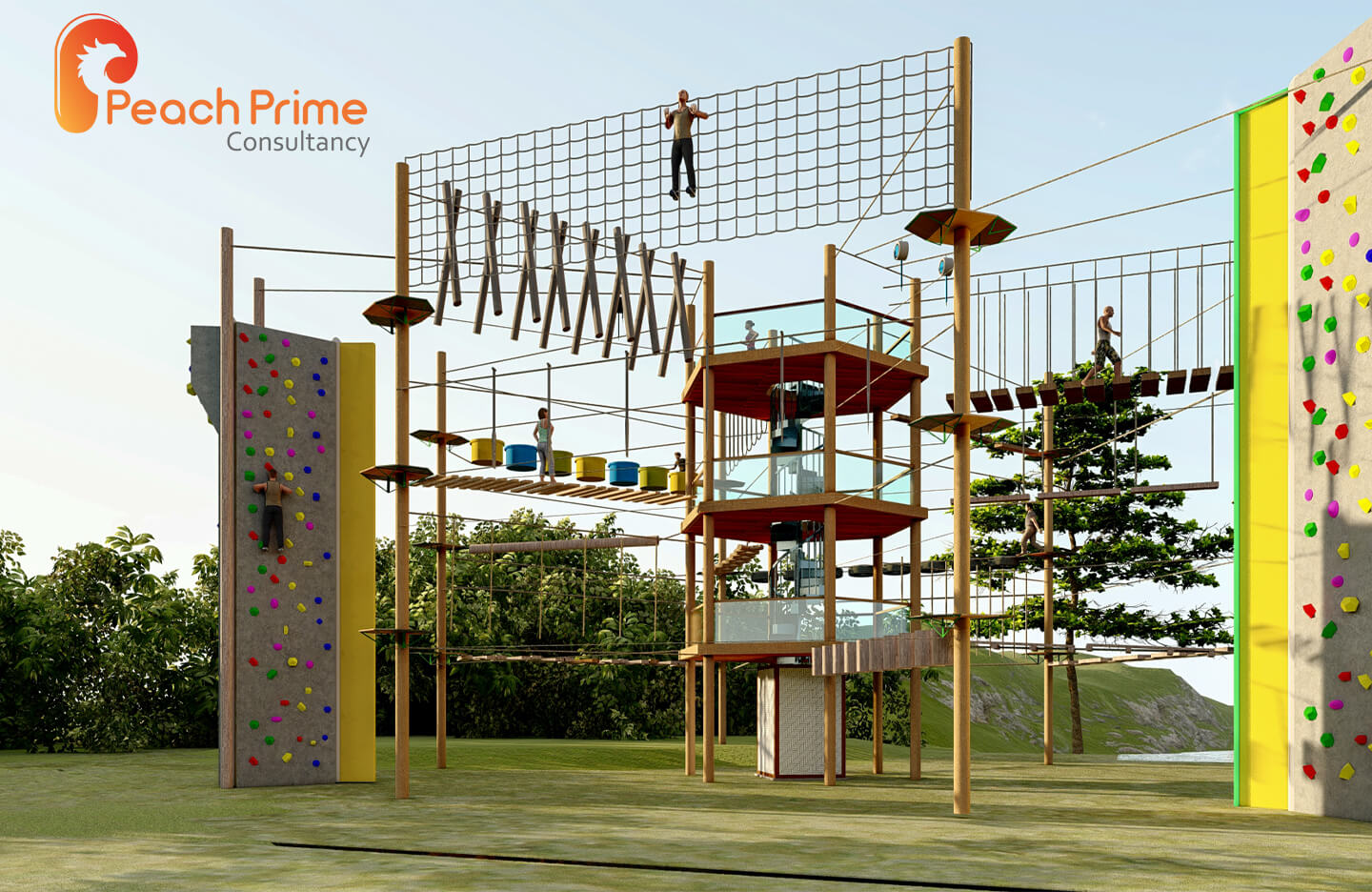
Blogs
Starting Strong: A Beginner’s Blueprint for Amusement Park Design
Designing and planning an amusement park is an exhilarating endeavour, blending creativity, technology, and strategy to create unforgettable experiences. Whether you’re an investor or company aiming to build a family-friendly amusement park, an indoor amusement park, or a high-tech immersive experience, laying the groundwork effectively is crucial. This blog will guide you through the essential steps of amusement park design and planning to ensure your vision transforms into a thriving destination.
1. Start with a Detailed Project Report (DPR)
A Detailed Project Report (DPR) is the cornerstone of any successful amusement park project. This comprehensive document assesses:
- Market Potential: Analyze target demographics, local competition, and trends in entertainment preferences.
- Site Feasibility: Evaluate site location, accessibility, environmental factors, and zoning regulations.
- Financial Viability: Estimate costs for construction, operations, and marketing while projecting revenue streams.
A thorough DPR provides a roadmap for the project’s scope, ensuring informed decision-making at every stage.

2. Conceptual Design: Bringing Your Vision to Life
Once the groundwork is laid, the conceptual design phase brings creativity to the forefront. During this stage, consider:
- Themes: Choose unique themes to distinguish your park, such as fantasy, science fiction, or cultural heritage. Popular IP-based attractions, like those at Universal Studios Japan (Osaka) or Magic Kingdom Park (Florida), Disney, Harry Potter attract diverse audiences.
- Ride Mix: Balance thrill rides, roller coasters, and interactive rides to cater to various age groups. High-tech amusement park rides and VR amusement park rides, Mechanical rides are now trending globally.
- Master Planning: Optimize land use to ensure seamless navigation and engaging experiences.
Example: Tokyo Disneyland’s meticulous themed areas, such as Adventureland and Fantasyland, create a cohesive and immersive environment.
3. Leveraging Technology for an Edge
Integrating technology elevates your park from ordinary to extraordinary. Here’s how:
- VR/AR Attractions: Interactive gaming zones and VR rides provide futuristic experiences that captivate tech-savvy visitors.
- Immersive Park Experiences: Incorporate multimedia shows, projection mapping, and sensory effects to enhance storytelling.
- Data-Driven Operations: Use technology for ticketing, crowd management, and personalized guest experiences.
Case in Point: Chimelong Ocean Kingdom (Zhuhai, China) blends marine life exhibits with thrilling rides and advanced technologies, such as immersive underwater experiences, setting it apart from traditional parks.

4. Indoor and All-Weather Attractions
Indoor themed amusement parks ensure year-round entertainment, overcoming weather-related challenges. These parks can host:
- Interactive Gaming Zones: Combine traditional amusement with cutting-edge gaming.
- Unique Dining Experiences: Themed restaurants provide immersive dining adventures, elevating guest satisfaction.
For example, Universal Studios Japan excels with attractions like The Wizarding World of Harry Potter, offering visitors an indoor escape into a magical world regardless of weather conditions.
5. Enriching Guest Experience
The key to building loyalty and repeat visits lies in a carefully curated guest experience:
- Family-Friendly Zones: Provide rides and attractions suitable for all ages.
- Convenient Amenities: Offer VIP packages, fast-track passes, and customizable itineraries.
- Memorable Entertainment: Incorporate live shows, parades, and unique events to keep guests engaged throughout their visit.
Example: Disneyland Park (California) seamlessly integrates nostalgia with innovation, making it a multi-generational favorite.
6. Learning from the Best architect for amusement park
Top 5 Amusement Parks and Their Unique Strengths
- Magic Kingdom Park (Bay Lake, Florida): Iconic attractions like Space Mountain and immersive parades create magical experiences for all.
- Disneyland Park (Anaheim, California): The original park blends innovation with classic attractions.
- Universal Studios Japan (Osaka): Exclusive attractions like Super Nintendo World set this park apart.
- Tokyo Disneyland (Japan): Detailed thematic areas offer a world-class experience.
- Chimelong Ocean Kingdom (Zhuhai, China): A unique combination of marine exhibits and record-breaking rides.

How Peach Prime Consultancy Can Help
At Peach Prime Consultancy, we specialize in amusement park planning and execution. Our expertise includes:
- Developing DPRs tailored to local markets.
- Crafting conceptual designs that stand out.
- Incorporating cutting-edge technology and unique attractions.
From family-friendly amusement parks to high-tech themed attractions, we bring your vision to life while ensuring profitability and sustainability. Let us guide you in creating a destination that captivates and delights.
Starting an amusement park is both a challenge and an opportunity. With careful planning, innovative design, and the right expertise, your park can become a landmark destination. Reach out to Peach Prime Consultancy to turn your dream into reality.









